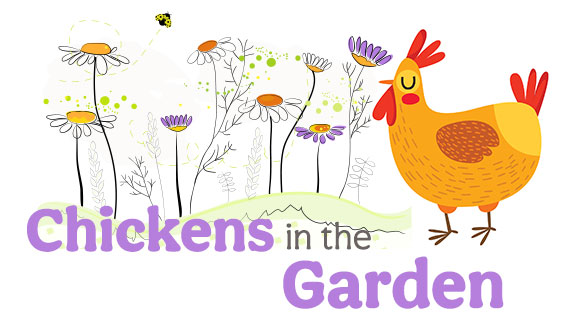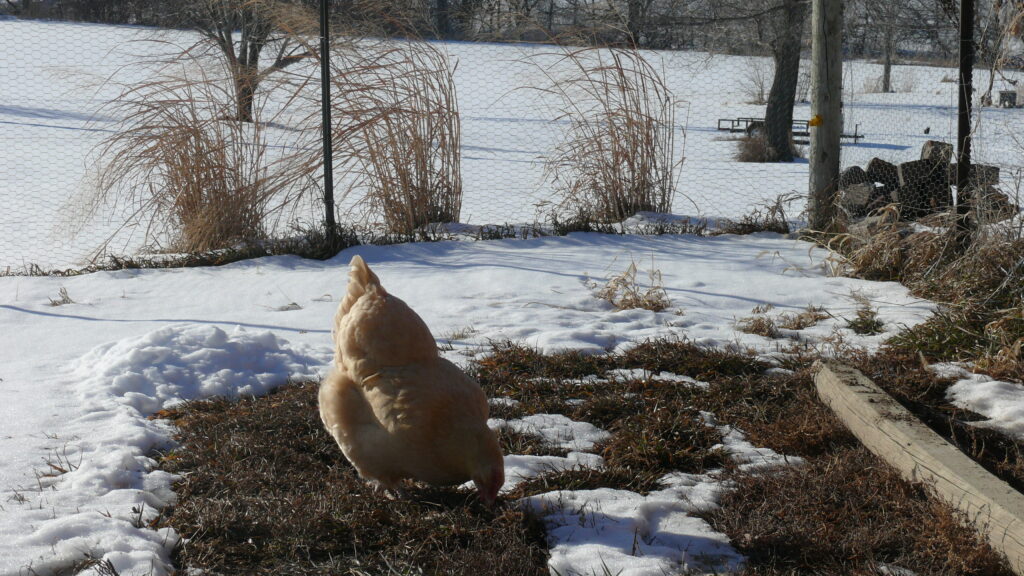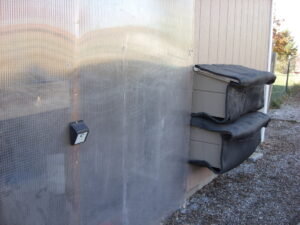After the first hard freeze, our vegetable and ornamental gardens are done for the year. Chicken keepers should be battening down the hatches for our backyard flocks. Both gardens and chickens need a bit of fall care and maintenance to make it through winter and come out in the spring happy and healthy. Read on for tips on getting your garden and chickens ready for winter.
Vegetable Beds
Once the fall crops have died back, rogue out any remaining plants. Take note of the placement of plantings so you can rotate crops next year. Compost plants, layering with chicken manure and fallen leaves. This makes a great “lasagna layer” compost. It’s best to destroy any diseased plants so you’re not spreading any live pathogens back into your compost and garden.
Chickens can help with garden cleanup if your compost pile gets too full. My girls love to nibble on many of our fall crops. Throw your kale, brussel sprouts, and cabbage into their pen for a late fall treat.
My garden bed is by my chicken pen, so I let my hens into the garden in the fall. They’ll scratch up any leftover weeds and their scratching will help to turn over and loosen the soil.
Ornamental Beds
As ornamentals die back after a killing frost, gardeners get antsy to clean up the garden beds. However, current research has shown many benefits of leaving dead plantings until the spring. Beneficial pollinators, including leaf cutter bees, red mason bees, hoverflies, ladybugs, and many butterflies and moths in different stages, will overwinter inside hollow plant stems, under leaves and hollow logs. Unless a plant is diseased, let it be until spring.
The other benefit of letting garden cleanup go until spring is the plant material offers an extra layer of insulation. The dead leaves help to protect tender plants from ice and snow. If you cut ornamentals too far back in the fall, they have zero protection from ice, snow and harsh winds. Most plants will not only thrive in the spring but have more new, lush growth earlier than plantings cut back.
The dead flower buds on perennials like Echinacea, or purple coneflower, and Rudbeckia, or black-eyed Susans, are a favorite of over-wintering birds. If you want to prevent reseeding, simply leave the stalks for pollinators and cut off the seed heads and feed to your chickens.
Lawns n’ Leaves
Leaves will not, as many homeowners fear, kill your grass. If snow is piled high and left on turf all winter, it might cause snow mold. But that would happen whether leaves were on the turf or not.
Save your time — and back — and mow over leaves 2 or 3 times to mulch them and leave them on the lawn. They’ll return complex organic matter and nutrients to the soil. If you must rake (usually out of peer-pressure from neighbors), throw the leaves in your chicken run. Like kids, chickens can’t refuse a huge pile of leaves!
Fall Watering
Trees and shrubs, especially young or newly planted, will benefit from a thorough soaking in the late winter. Apply an inch of water to trees and shrubs, and cover with a 2-to-3-inch layer of mulch. Mowed leaves make a great mulch, as does used pine chips from the chicken pen.
Water is the single most important “nutrient” for chickens, so don’t forget to have a plan before their water freezes over. Consider how you’ll keep their water from freezing. I added an outlet by the coop and use a heated dog bowl for the hen’s drinking water.
Consider Climate
How to prepare for winter all depends on your climate. If you’re in the Midwest region like me, you’ll have to plan for the harsh winds, snow, the occasional blizzard, and even sudden thaws. I’ve insulated the coop, covered the exterior nest boxes, and will enclose the run with tarps and plexiglass panels to keep out blowing snow and harsh winds.
In milder climates, keeping the run dry can be challenging. Wet runs can breed pathogens, and wet chicken feet are soft and can be pierced with nails or wood splinters and become infected. Check the drainage and add some stepping stones or wooden pallets to keep chickens up and off muddy walking areas.
If you’re used to a full-throttle fall garden cleanup, letting your garden go can take getting used to. Most of our long-held practices often come from peer-pressure (“but the neighbors do it!”) and outdated information. Relax, save your time and back—and pollinators. The best benefit of letting your garden cleanup go — more time with chickens!



